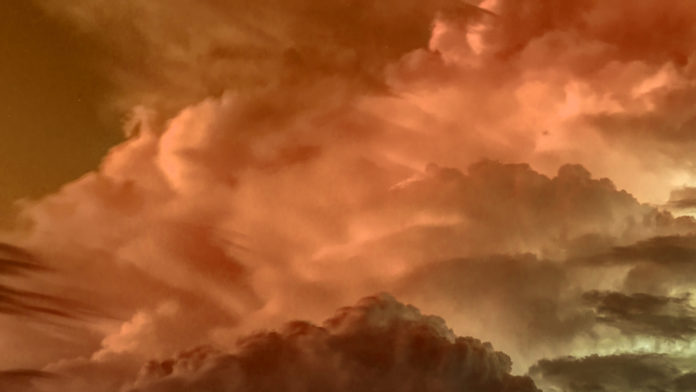Hot Jupiters are home to endless days and endless nights. They are gas giants in other solar systems, but unlike our Jupiter, they are so close to their parent stars that half of the planet is always facing their sun. That leaves a nightside in permanent darkness.
Infrared measurements from these exoplanets give new insight into the otherworldly weather patterns on those nightsides.
Hot Jupiters with close circular orbits can circle their stars in under three days, locking one side of the planet facing toward the sun, just like how one side of the Moon always faces the Earth. While their daysides are perpetually scorched to temperatures that can vary from one hot Jupiter to the next by up to 1,700 °C, their nightside temperatures are surprisingly uniform.
Those equal temperatures suggest that nightsides are blanketed by clouds made of minerals and rocks, say McGill University physicists and exoplanet researchers Nicolas Cowan, Dylan Keating, and Lisa Dang. Their study was published in Nature Astronomy.
The team used infrared data from the Spitzer Space and the Hubble Space telescopes to estimate the dayside and nightside temperatures on 12 hot Jupiters. They found that the nightside temperatures were clustered around 800 °C with only a slight upward trend with higher stellar irradiation.
These temperatures are hot enough to vaporize rocks.
Through atmospheric motion from the deep atmosphere or the hotter dayside, that vaporized rock can condense into clouds, and may even rain down from the sky. The condensed rock clouds would also block outgoing thermal radiation into space.
Rock-based clouds would be nearly opaque, so the infrared data would reveal cloud-top temperatures. Similar cloud temperatures mean the material is condensing at similar temperatures. Therefore, the matching temperatures of nightsides on so many hot Jupiters also suggests that their clouds may share similar compositions, likely minerals like manganese sulfide or silicates.
As foreign as rock-based clouds may sound, the basic physics of cloud formation is universal, no matter what they’re made of. That means that anything we can learn about how clouds form on hot Jupiters can be applied anywhere, including here on Earth.








































